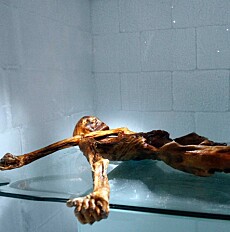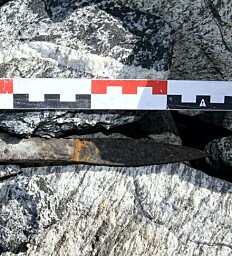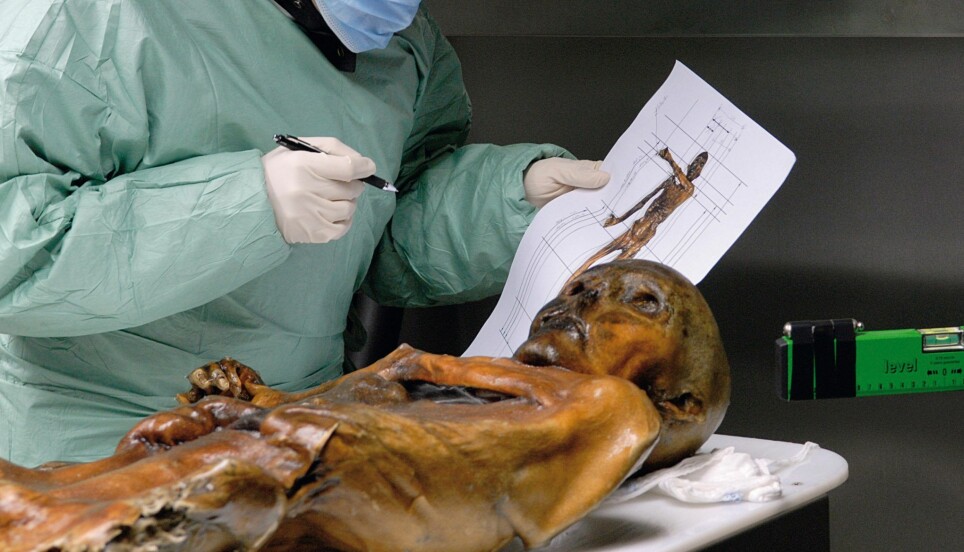
New research on 5300-year-old Ötzi suggests there could be more ice mummies out there
The 31-year-old find of the ice man from the Alps, has been studied again. While Ötzi is unique, the conditions that preserved his body are not, say the researchers.
The story starts in September 1991, when a German couple discovered the body of a man protruding from the ice in the Ötztal Alps, on the border between Austria and Italy.
The man turned out to be 5300 years old. His body was exceptionally well preserved.
Blood on his shoulder
An arrow and traces of blood were found on the man’s left shoulder, as well as a deep cut in his hand. The man, who eventually was known by the name of Ötzi, or the iceman, was thus probably murdered. His equipment was also damaged, most likely in battle, according to archaeologists.
The Austrian archaeologist Konrad Spindler’s theory about Ötzi was that he died where he was found, during fall, in a gully in the Tisenjoch-pass. His body then freeze dried, before it was covered in ice due to a dramatic cooling of the climate at just that time. And here the body lay untouched, as if in a time capsule, for more than 5000 years. Because the body was in a gully it was protected from the glacier above, which was in constant movement and would otherwise have crushed any remains of a body. The entire process was a miracle of sorts.
Then came an exceptionally warm summer in 1991, and for the first time since his death, Ötzi thawed out of the ice, and became a world sensation.
As if the story is not spectacular enough already, there is also a myth about a curse connected to the ice mummy. A number of people closely connected to Ötzi died in the years after the find, including archaeologist Spindler.
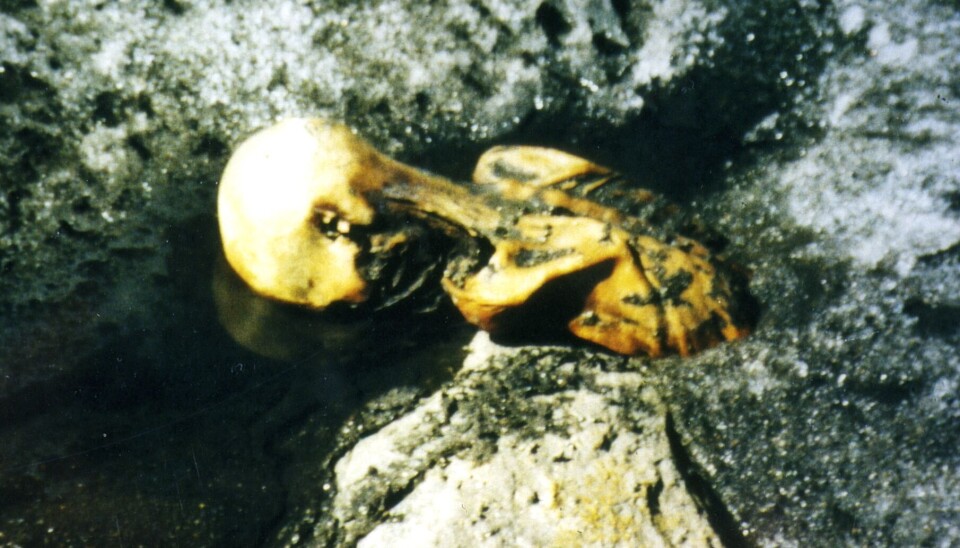
What if he was found today?
But the story is a little too good to be true, according to a new study published on 7 November in the journal Holocene.
The experienced glacial archaeologist Lars Pilø is one of the researchers behind this new review of the Ötzi-find. He is also one of the main archaeologists behind the well-known Norwegian glacial archaeological programme Secrets of the Ice.
According to Pilø, Ötzi is ‘the holy grail’ of glacial archaeology. But the more experienced Pilø himself became in this field, the more he felt the story of Ötzi wasn’t quite right.
During the world congress for frozen archaeology in Innsbruck in 2016, he visited the Ötzi-museum, the South Tyrol Museum of Archaeology in Bolsono in Italy.
“We were given a tour by a guide who told us the story of how Ötzi had been preserved. He described a series of miracles,” Pilø says.
The story didn’t add up with what Pilø knew from his own work as an archaeologist on the ice.
“The big test is to imagine that Ötzi was found today. With everything we now know about how glacial archaeological localities work, would anybody have come up with Spindler’s theory? The answer to that is no,” Pilø says to ScienceNorway.no.
“We don’t need the string of miracles, Ötzi was preserved by regular natural processes,” he says.
Melted out of the ice several times
Together with colleagues, Pilø has reviewed the available research on Ötzi. It’s not the first time that somebody has presented alternative theories to Spindler’s conclusions. Studies of everything from the remains of food in Ötzi’s stomach to analysis of his clothes have among other things established that he did not die during fall – he died during spring or summer.
The new study has also reviewed the entire find and the find site, in light of the knowledge and methods that glacial archaeologists today use. And finally, glaciologists have compared old and newer maps as well as height charts for the mountains, to find out exactly how thick the ice covering Ötzi actually was.
The researchers conclude that Ötzi was not preserved in a time capsule.
“Our thorough review shows that he melted out of the ice, probably a few times, at least during the first 1500 years,” Pilø says.
During some periods, the body was immersed in water.
That items melt out of the ice, and then again become frozen in the ice is well known from the Norwegian mountains where Pilø regularly does field work.
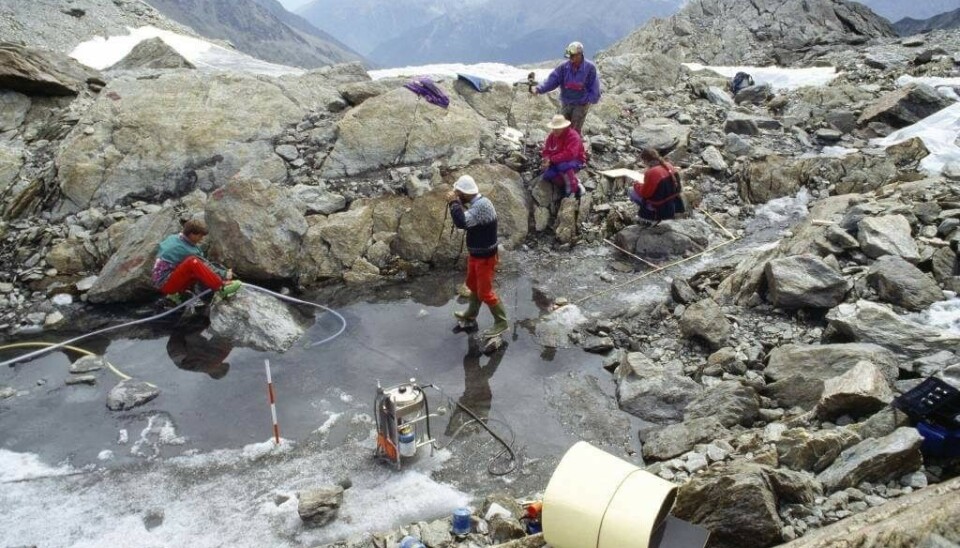
In and out of the ice
This also explains why Ötzi’s tools and weapons were damaged.
“The arrow quiver, his backpack, the bow – these items were not damaged during combat. They were damaged by natural processes at the site,” Pilø says.
This does not mean that Ötzi did not die a violent death.
“That theory is most likely correct, he did have an arrowhead in his shoulder, there has obviously been a violent battle. But the damaged items cannot be used as evidence for this,” Pilø clarifies.
Neither Ötzi nor the items were originally left in the gully, according to the new study. They ended up there as the ice melted.
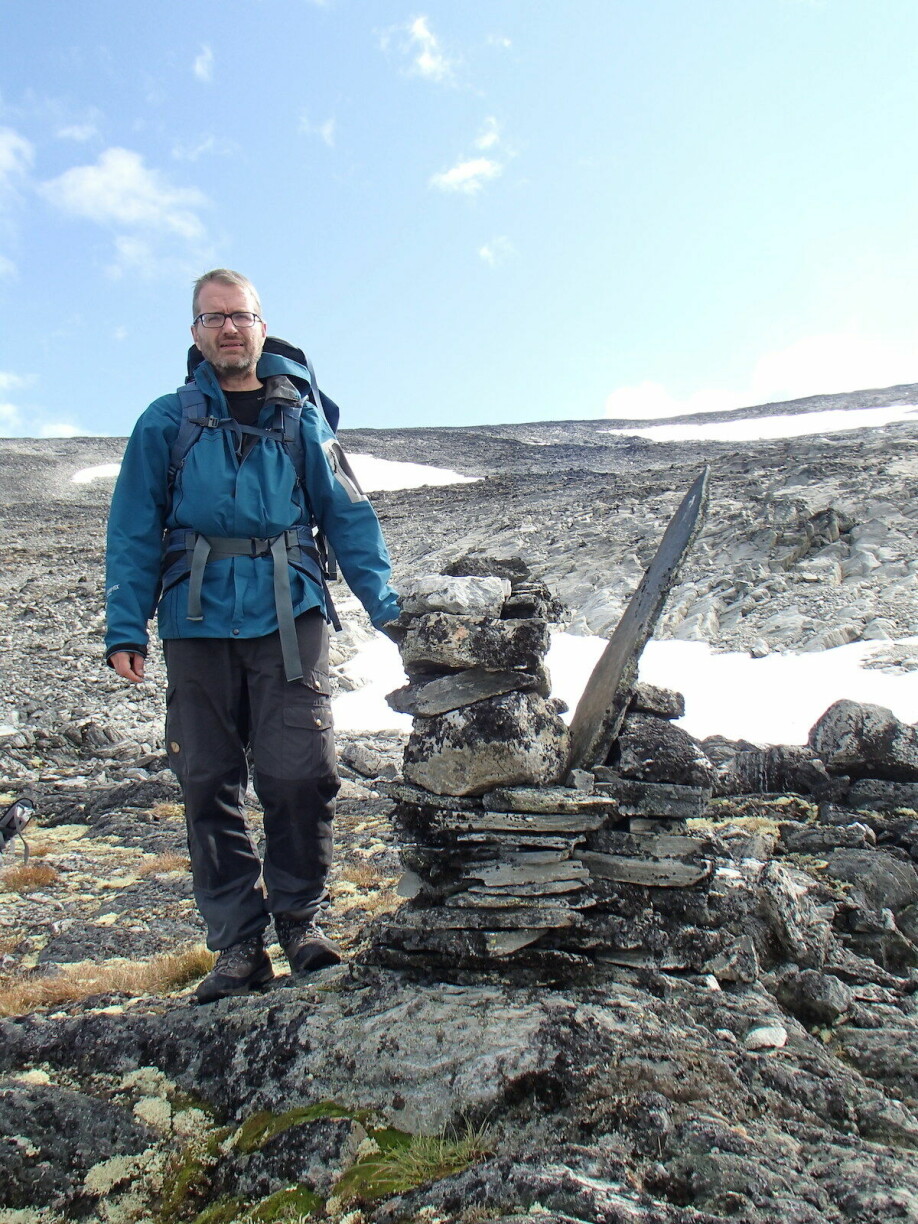
These processes are well known from finds done in ice patches in the Norwegian mountains, such as Lendbreen in Breheimen, and Langfonne in Jotunheimen. Items that people have lost for thousands of years have been moved around and been damaged by natural processes around this ice.
At Lendbreen archaeologists have found textiles, shoes, remains of sleds and horses, and skis from the Bronze Age. The items are better preserved the deeper down in the gully the archaeologists get. Here they have even found horse dung dated from the Viking Age. In the areas around the gully however, items are scarce.
But even if the items are well preserved, they are often damaged. Pieces of the same item can be found far apart. This is because the ice grows and retreats with the seasons and as time goes by. Items melt out, are damaged, moved, and then frozen again.
Should be more ice mummies out there
And finally: There was no glacier moving over the gully where Ötzi lay. And there was no sudden climatic cooling that led him to freeze rapidly.
Large glaciers that move are usually found further down in the mountains, Pilø explains. At the bottom of these glaciers the temperature is at freezing point. This leads to water forming, and the glacier slowly slides downward. The cycle of such glaciers is about 500 years, meaning that finds from them cannot be older than 500 years old.
Higher up in the mountains the ice is stationary, resting on permafrost. It needs to be very thick in order to start sliding down. Andrea Fischer, glaciologist and mountain researcher at the Austrian Academy of Sciences, is behind the analysis of ice in the new study. She concludes that it was not thick enough to be sliding, and that the thickness of it hasn’t changed much over time.
Ötzi was frozen in what the researchers call cold ice – ice which is often many thousands of years old - just like the small glaciers and ice patches that Secrets of the Ice are constantly monitoring in the Norwegian mountains.
“For a long time, Ötzi has been viewed as an exceptional find, and in many ways, he is,” says Pilø.
“However, the conditions under which he was preserved and subsequently found are not exceptional. And if we are right about this, then there should be a fair chance that there might be more ice mummies like this to be found in the mountains in the future,” he says.
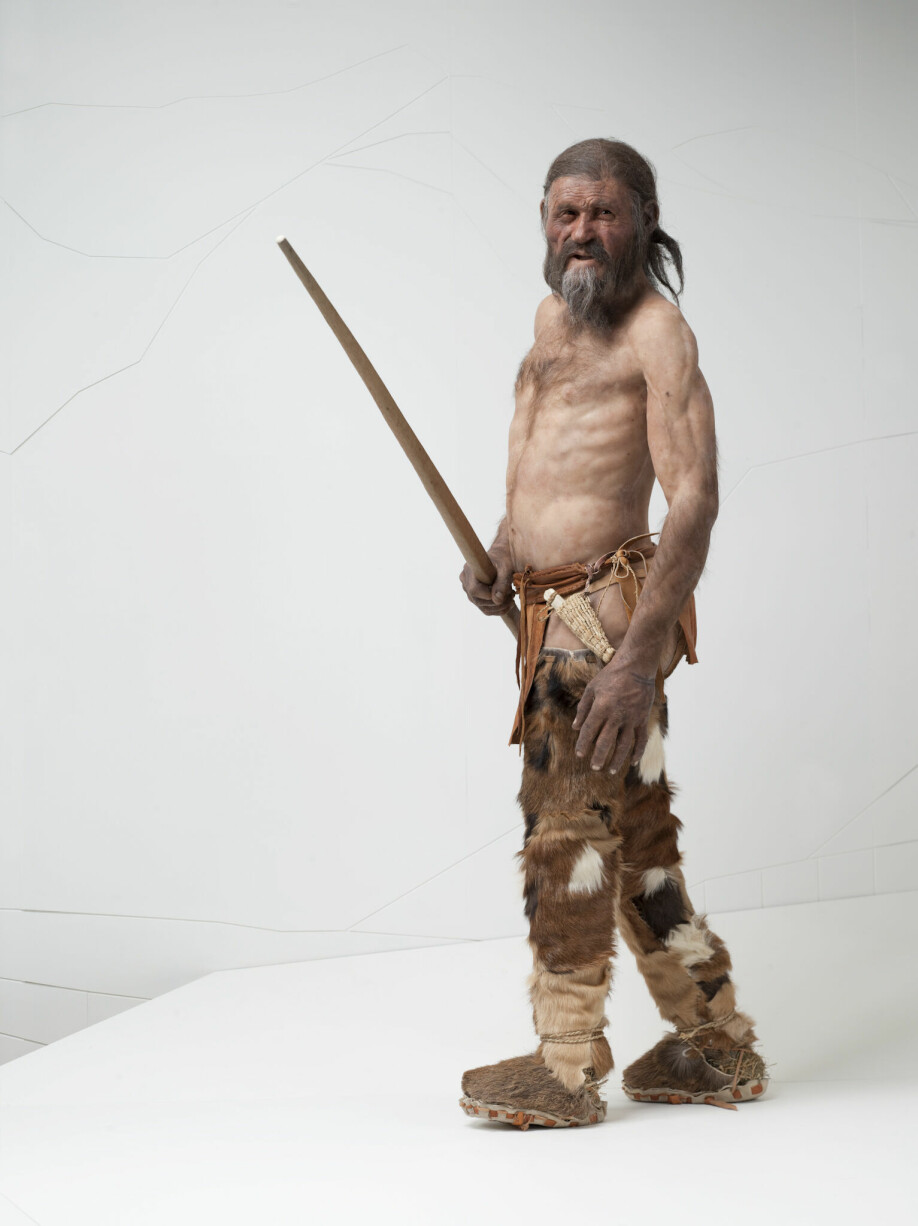
“The thing about Konrad Spindler’s theory from 1993 is that it’s such a good story. What we bring to the table is a bit of a mess in comparison. Lots of processes, no moving glacier, no climate indicator. Our story is much more unclear and difficult,” Pilø says.
Sites that produce finds continuously
Archaeologist Martin Callanan at NTNU also has a long history within glacial archaeology. He has read the new study on the Ötzi-find.
“There are new data here that were very interesting to read, particularly about the characterization of the ice at the site,” Callanan says to ScienceNorway.no.
“In the 90s, everything was a glacier. Now we understand more about the ice, and about ice patches, than we did back then,” he says.
After several decades of observations and gaining knowledge in the Norwegian mountains, it’s only natural that researchers start looking at finds from other places and review them in light of new information, according to Callanan.
Whereas the archaeologists who have studied Ötzi have focused on Ötzi, glacial archaeology in Norway has developed in a different way.
“People like Lars Pilø and I work on sites that produce finds continuously, and we work on the same sites for decades. The iceman was a one-time-thing in 1991. You could say that they had emptied the scientific gold already a couple of years after that one find,” he says.
It could happen any day
Even if details such as whether or not Ötzi melted out of the ice a few times or not are interesting, they don’t threaten the story of Ötzi, according to the NTNU-archaeologist.
“The iceman is unique and always will be unique, within archaeology and in the history of knowledge,” says Callanan.
He says that Konrad Spindler was an extremely competent archaeologist, full of knowledge.
“He interpreted the find based on the best available knowledge at the time. It is thanks to his efforts that Ötzi was shared so widely with the public, and he did that in a time when Facebook and Twitter did not exist. He drove all over Europe giving lectures on the topic,” Callanan says.
“I believe Spindler would have relished in all the new glaciological finds and new perspectives on Ötzi,” he says.
Callanan agrees that chances are good that another ice mummy might appear in the ice at some point in the future.
“Ötzi is unique, but that doesn’t mean that we won’t have another ice mummy. The conditions in Scandinavia are promising, we have high alpine mountains, old ice and cultures that have been connected to these areas. It’s not like I have a body bag stored away in waiting, but I have thought about what we would do if it happens. I’m full of anticipation every fall, waiting for that call about a finger sticking out of the ice!” he says.
Reference:
Pilø, Lars et al, Ötzi, 30 years on: A reappraisal of the depositional and post-depositional history of the find, The Holocene, 2022
------
Read the Norwegian version of this article on forskning.no








